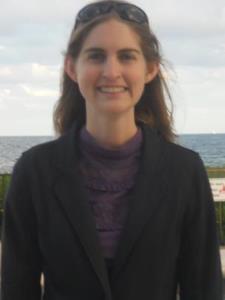Anuj M. answered • 04/11/20
4+ years of Biology teaching experience, with many satisfied students
"Drosophila females of normal appearance but heterozygous for three autosomal genes are mated to males that are homozygous recessive for the three genes: glassy eyes, coal-color bodies and striped thoraxes."
Let us designate the glassy-eyed allele as ge, the coal-color body allele at cb, and the striped thorax allele as st, with the dominant wild type alleles marked with the plus sign (ge+, cc+, and st+, respectively). The above cross therefore mates a female tri-hybrid (heterozygous for 3 genes) with a male that is homozygous recessive for all 3 genes, and that can, therefore, only provide the recessive allele for each gene, making it effectively irrelevant to the phenotype of the offspring. In other words, the phenotype of the offspring reflect the alleles of each gene they received from their mother, either after no recombination, single recombination (or crossover) between the first and second gene or between the second and third gene (presumed to be) on the same chromosome, or double recombination (double crossover, one crossover between gene 1 and gene 2, and a second crossover between gene 2 and gene 3). A double recombination between two chromatids swaps the middle gene allele, since one "switches" from one chromosome to the other and back (e.g. ABC undergoing double recombination with abc produces AbC and aBc chromosomes, and one of these two ends up in the gamete).
Of the 1000 progeny scored, the results are:
Trait Number
Wild type 35
Striped thorax 4
Coal body 456
Glassy eyes and Coal body 5
Glassy eyes and striped thorax 476
Glassy eyes, striped thorax and coal body 29
Now, if two genes are independently assorting, we expect 25% of each combination of the two alleles of each gene, and if genes are on the same chromosome but undergo recombination 50% of the time (or more, i.e. = or > 50% recombination or 0.5 recombination frequency) then we also expect 25% of each combination of alleles. So, genes are linked only if they undergo recombination by crossing over between them less than 50% of the time, i.e. the minority of the time. This means that non-recombinant (non-crossover) chromosomes will be passed on to the majority of the offspring, and therefore produce the two largest groups of offspring. In contrast, if the probability of one crossover is < 50% or <0.5, and if we assume or expect that crossover events are independent of each other (not always true, but a good working assumption), then by the product rule of probability, the probability of a double crossover is < 0.5 x < 0.5 or < 0.25, i.e. the fewest number of offspring will receive either of the two chromosomes produced by a double crossover.
We therefore rearrange the list of offspring above as follows:
Of the 1000 progeny scored, the results are:
Trait Number Crossover Class Genotype of female gamete
Glassy eyes and striped thorax 476 None/Parental ge, st, cb+
Coal body 456 None/Parental ge+, st+, cb
Wild type 35 Single ge+, st+, cb+
Glassy eyes, striped thorax and coal body 29 Single ge, st, cb
Striped thorax 4 Single ge+, st, cb+
Glassy eyes and Coal body 5 Single ge, st+, cb
Striped thorax, coal body 0 Double ge+, st, cb
Glassy eyes 0 Double ge, st+, cb+
Thus, a double crossover would have swapped st/st+ (ge, st, cb+ to ge, st+, cb+ and ge+, st+, cb to ge+st, cb) between homologous chromosomes, placing it in the middle. In other words, the genes are already listed in order in the genotypes above (although the mirror image, cb+, st, ge and cb, st+, ge+, would also work).
To calculate the recombination frequency between the ge+/ge gene and the st+/st gene, one simply adds up all offspring produced from a gamete that received a chromosome produced by a crossover between the two genes, including all double crossovers (since double crossovers include single crossovers, although, in this case, there are 0 double crossover offspring), and divides by the total number of offspring, 1000. This is (4 + 5 + 0 + 0)/1000 = 0.009. This indicates a map distance of 0.009 x 100 = 0.9 map units (since each map unit corresponds to 1% recombination) between the ge+/ge gene and the st+/st gene. Similarly, the recombination frequency between the st+/st gene and the cb+/cb gene is (35 + 29 + 0 + 0)/1000 = 0.064, indicating 6.4 map units between these genes. Thus, the two chromosomes in the female tri-hybrid are:
ge -- 0.9 m.u. -- st ----------- 6.4 m.u. -------- cb+
ge+ --0.9 m.u.-- st+ --------- 6.4 m.u. -------- cb
If we expect (i.e. assume) that the two crossover events are independent, then the probability, and hence the frequency, of a double crossover is the multiple of the two single crossover frequencies, so this is 0.009 x 0.064 = 0.000576; so, there should be 0.000576 x 1000 = 0.576, or, rounded up, one double recombinant offspring.






Anuj M.
04/11/20